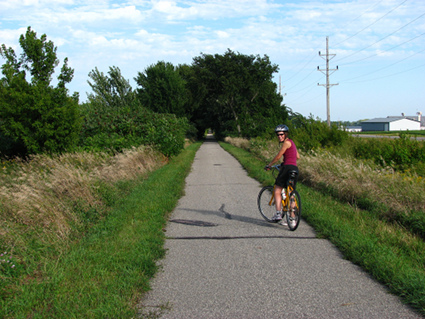
Minnesota’s towns find big benefits in bike trails

2829996140_6d4f376cef_b.jpeg
Car-calming bicycle lanes may be all the rage in Michael Bloomberg’s New York, but in the midwest rural bike paths are seen as an engine of economic development. This report from Minnesota comes from the Associated Press.
An early portion of the Rocori Trail is paved in a region’s hopes.
Backers of trails often tout them as a huge economic driver for the regions that host them, augmenting recreational and aesthetic arguments with economic ones as they do the long work of securing support and funding to construct a trail.
Leave a Comment
Leave a Comment


